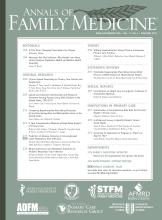Some of those who debate health care reform in the United States often point to the experience of other countries as justification for keeping things more or less the same, while others point to those same countries as potential models for a radically redesigned US system. That debate was energized and enlightened by a marvelous forum on the comparative performance of primary care in several countries at the 2005 NAPCRG Annual Meeting held in Quebec City, Quebec, Canada last fall. A highlight of this forum was the presentation by Marie-Dominique Beaulieu, MD, MSc, of the Canadian Health Service Research Foundation’s analysis of the correlates of performance with various structural models of primary care.1
The research team examined the organizational structure of 28 distinct models of primary health care delivery in a large number of industrialized nations. From this analysis, they derived 4 archetypal organizational models, the key characteristics of which are summarized below:
-
Professional contact model – care by FPs solo or in groups; little/no association with other health care professionals; fee-for-service; IT is for internal use only; no formal attention to continuity; no formal integration of services with other providers; dominant model in the United States, Canada, and Belgium
-
Professional coordination model – care by FPs and nurses; capitation or capitation plus fee-for-service; formal attention to continuity; IT integrates with other sources of health care service; nurse liaison helps integrate health care services; dominant model in the United Kingdom, Denmark, The Netherlands, United States (HMO staff model)
-
Integrated community care model – population care provided by health care centers linked with IT to other providers serving same population; continuity assured by team; availability of care at all times; full scope of care assured; found in some provinces in Canada
-
Non-integrated community care model – health care center focus and full range or services, but no IT or other mechanisms to integrate services with other providers; services not available at all times; no formal mechanism to ensure continuity; found in some provinces in Canada.
These organizational models were evaluated according to 6 basic performance criteria for primary health care service:
-
Effectiveness
-
Productivity (the efficiency of service delivery)
-
Accessibility
-
Continuity
-
Quality (the appropriateness of care from consumer and provider perspectives)
-
Responsiveness (patient-centeredness)
Table 1⇓ portrays the 4 basic delivery models and their rank order for each of the 6 performance criteria.
This analysis suggests that the integrated community model is the most generally desirable form when all performance characteristics are taken into account. It also suggests that the dominant model in the United States, professional contact, is highly accessible (for those with insurance) and responsive, but relatively ineffective, inefficient, and of mediocre quality. Furthermore, the purported superiority of the professional contact model on these 2 dimensions (at least as it is fielded in the United States) is challenged by a recent survey of adults about their experiences with primary health care in the United States, Canada, New Zealand, Australia, and the United Kingdom. That study found that, “Across multiple dimensions of care, the United States stands out for its relatively poor performance. With the exception of preventive measures, the US primary care system ranked either last or significantly lower than the leaders on almost all dimensions of patient-centered care: access, coordination, and physician-patient experiences.”2
Because of the current political polarization in the United States and spiraling federal deficits, many feel it is unlikely that there will be a systemic overhaul of the health care system in the near future. However, it is entirely possible for states, localities, large and small employers, and family physicians both individually and collectively to create new models of primary health care that deliver improved performance across all six key dimensions. Community integrated and professional coordinated models of care seem to be worth looking at in detail, and their apparent individual shortcomings might well be remedied by system redesign, perhaps with little need for added resources. NAPCRG will continue to be a critical venue for the international exchange of experiences and ideas that can help guide those efforts.
Performance Characteristics of Primary Care Models
- © 2006 Annals of Family Medicine, Inc.







